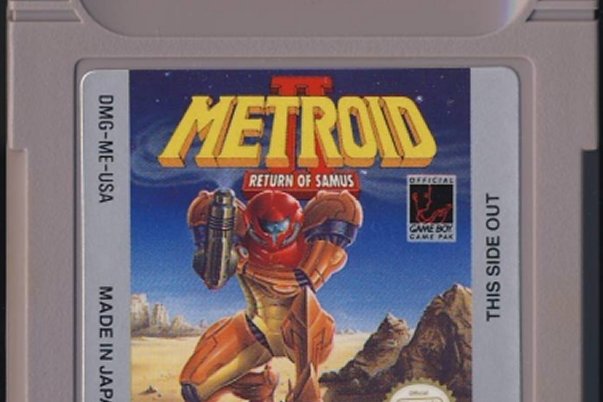The History of Metroid
A series that lived in the shadows of giants
Metroid was released exclusively for the Famicom Disk System on August 6, two months after the larger 128k cartridges arrived on the market, effectively killing off all need for the 3" floppy disks. Even though an astonishing 40 percent of Japanese NES owners purchased the Disk System (a record for a console add-on) it still wasn't enough to make Metroid a Mario-calibre success.
A year later Samus was ported to cartridge (sans a battery save, which Nintendo decided to give to Zelda instead) and sales faired better in North America, but Legend of Zelda's marketing blitz didn't help much. R&D1 moved on to other projects and Samus didn't return for a full five years...
In 1991 Yokoi had released the most important creation of his career; the Game Boy. Nintendo's handheld had taken the world by storm, even outselling the market-leading NES. The original Metroid had sold well enough in the West, but after bombing in Japan the series' future was in question. Now, R&D1 decided to take advantage of its position of power to create a new Metroid on its own hardware.
Metroid II: The Return of Samus was the only 2D instalment not to be directed by Yoshio Sakamoto. Instead original artist Hiroji Kiyotake took charge of the Game Boy instalment - and his influence at the helm shows even today.

Despite the simple monochrome graphics Return of Samus looked a world above the NES original. A lack of colour forced the designers to give visual cues for Samus's different suits, and the handheld versions' distinctive giant shoulder pads have remained a staple of Samus' look ever since.
Kiyotake opted for a much more linear design than in the previous game, tasking Samus with hunting out Metroids on their home planet SR-388 to fulfil her bounty hunter contract. Advancing was based completely on killing off the famous critters, and the wild departure left many series fans with mixed opinions. Even so it introduced plenty of traditional franchise gameplay, including wave beams, bombs and a wall-crawling morph ball.
Weekly digests, tales from the communities you love, and more
In a twist similar to the still-famous female reveal, Return of Samus ended with the bounty hunter killing off the reptilian Metroid queen, leaving only one of the ancient creatures alive... a small Metroid hatchling, who Samus decided to spare.
Again like its predecessor, the handheld sequel was relatively successful but nothing up to the world-smash calibre of Zelda and Mario. In retrospect the sequel suffered somewhat from its linear concept, but put in stone plenty of series hallmarks, and set the stage for the game R&D1 always wanted to make...


